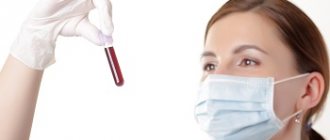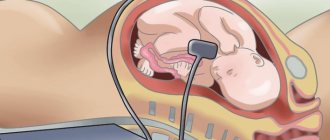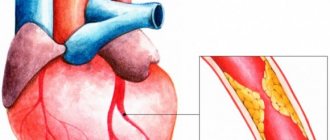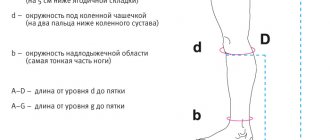Content
- Blood clotting process
- Prothrombin time indicators
- Determination of prothrombin time according to Quick
- Methodology for studying prothrombin time
- Indications for prescribing prothrombin time analysis
- Prothrombin time indicators during pregnancy
The coagulation and anticoagulation systems of the blood determine the continuous flow of blood in the vessels, thereby ensuring all the vital functions of the body.
The anticoagulant system keeps the blood fluid, while the coagulation system prevents possible bleeding by forming blood clots.
How to decipher a coagulogram
This analysis is carried out in order to obtain answers to the questions:
- does the blood clot normally?
- is there a risk of postoperative or postpartum hemorrhage;
- what is the cause of frequent bleeding and bruising;
- what dose of anticoagulants is safe if their use is necessary.
Blood hypocoagulation and tendency to bleeding will be indicated by:
- reduced prothrombin according to Quick (less than 75);
- decreased prothrombin index (less than 80);
- increased prothrombin time (more than 18 seconds);
- increased INR (more than 1.3).
Hypercoagulability and tendency to form blood clots is characterized by:
- increased prothrombin index (more than 110);
- increased prothrombin (above 145);
- shortening of PT (less than 10 s);
- decrease in INR value less than 0.8.
Blood clotting process
If we briefly describe the coagulation process, it will consist of the following phases:
- prephase or vascular-platelet hemostasis;
- prothrombinase;
- thrombin;
- fibrin;
- postphase, which consists of two parallel processes: retraction (reduction and thickening of the blood clot) and fibrinolysis (dissolution of the blood clot).
Thus, for the formation of a blood clot, several components are necessary: the vessel wall, blood elements, and the plasma blood coagulation system.
This process looks like this: damage to the vascular endothelium causes activation of enzymes of the coagulation system, which, in turn, forms fibrin threads, which are the framework for the formation of a blood clot.
The coagulation system is activated in two ways:
1. External - when coagulation factors come into contact with damaged tissues outside the vessel.
2. Internal - associated with destroyed blood cells and damage to the endothelium, that is, the process starts inside the vessel itself.
What affects the accuracy of the result?
In some cases, the analysis result is inaccurate. The following can increase blood clotting time: alcohol, overeating, fatty foods, legumes, vegetables. Medicines reduce PTI: antibiotics, anticoagulants, anabolics, heparin, diuretics, laxatives.
The time period can be shortened by: eating foods rich in vitamin K (cabbage in all varieties, primarily spinach, beef liver), dehydration of various origins, antihistamines, contraceptives, caffeine-containing substances.
Prothrombin time indicators
Prothrombin time is a special laboratory indicator that reflects the external pathway of activation of the blood coagulation system.
Often, prothrombin time is determined with activated partial thromboplastin time (aPTT), which evaluates the intrinsic activation pathway. Taken together, these two indicators reflect the coagulation and anticoagulation systems as a whole and its changes in the pathology of internal organs.
The normal prothrombin time is 11-16 seconds.
Also, to determine the functions of the coagulation system, other indicators are determined - prothrombin index and international normalized ratio (INR).
Prothrombin index (PTI) is a percentage indicator determined by the ratio of the prothrombin time of control plasma to the PTI of the test human plasma. Normally it should be 95-105%.
International Normalized Ratio (INR) – This test compares blood taken from a patient to internationally normalized plasma.
The norm value can range from 0.85-1.25.
It should be borne in mind that during warfarin therapy, indicators may change, so it is necessary to take into account medical history.
Reasons for the increase
If the prothrombin index is elevated, this is evidence of excessive activity of proteins and enzymes that ensure normal coagulation. This phenomenon occurs less frequently. The main danger is the increased risk of blood clots.
There are relatively few formation factors:
- Malignant processes in the body. Cancerous tumors of any location. Mainly those that affect the bone marrow, liver, and organs of the digestive tract. Less often others.
Also large neoplasias or decaying structures in advanced stages. When the body is forced to clot blood faster due to massive destruction of abnormal tissue in order to prevent death.
- Allergic reactions. The phenomenon is temporary. It is necessary to eliminate the body's inadequate immune response as quickly as possible. Deviations in indicators for chronic diseases of this type are especially noticeable.
- Deficiency of vitamins C and K.
- Lesions of the gastrointestinal tract. The intestines, since the absorption of nutritional compounds is impaired, also the stomach. The liver stands apart. It is responsible for the normal synthesis of coagulation factors. Any deviations can cause illness. Diagnoses such as cirrhosis and structural abnormalities are especially dangerous.
- A high prothrombin index occurs in dysbacteriosis, when the balance of beneficial and opportunistic microflora is disturbed in the direction of increasing the amount of the latter. The decay processes slow down, and the evacuation of feces is disrupted. This leads to the release of toxins into the blood, poisoning the entire body. These poisons have the property of activating prothrombin indirectly. The reason is not so obvious, but no less dangerous.
When assessing the results and searching for pathological processes, it is necessary to take into account possible deviations of reference values in the specific laboratory where the study took place.
Methodology for studying prothrombin time
To determine the prothrombin time, fresh plasma from the patient being studied is used. The blood is collected in a tube containing sodium citrate to bind blood calcium. Next, the sample is mixed, centrifuged, and an excess amount of calcium is added at a temperature of 37C to restore the blood’s ability to clot. After this, tissue coagulation factor (better known as factor III) is added and the time of blood clot formation is noted.
It should be taken into account that in some pathologies the prothrombin time may be increased or decreased.
Prothrombin time is increased with:
1. Congenital deficiency of certain blood coagulation factors such as II (prothrombin), V (Proaccelerin), VII (Proconvertin), X (Stewart-Prower factor).
2. Acquired deficiency of blood coagulation factors resulting from diseases (chronic liver and kidney diseases, amyloidosis, autoimmune diseases).
3. Disseminated intravascular coagulation syndrome (DIC syndrome), which develops in blood diseases, including cancer.
4. The use of indirect anticoagulants (warfarin) in the main therapy.
5. Developmental hypovitaminosis K (for diseases of the pancreas and gall bladder, dysbacteriosis, malassorption syndrome).
6. An increase in the level of antithrombin in the blood.
The use of certain drugs also leads to an increase in prothrombin time (some antibiotics, steroid hormones, laxatives, acetylsalicylic acid in doses exceeding therapeutic ones).
Prothrombin time is reduced with:
1. Polycythemia.
2. Pregnancy in the last trimester.
3. Thrombosis of deep veins of the lower extremities.
4. Use of acetylsalicylic acid in small doses.
5. Taking oral contraceptives.
The role of prothrombin in the body
The protein prothrombin acts as one of the blood coagulation factors (second factor (FII). The compound takes part at a certain stage of regulating the rheological properties of liquid tissue (its fluidity).
By nature, it is a precursor of another enzyme, thrombin. But it does not have all the properties of its own conditional metabolite. If we talk about functions, they will be like that.
Ensuring normal clotting
This task is solved only when some damage is present. Internal or external, it does not matter in the context of the situation. Under natural conditions, when everything is in order, coagulation factors are in an inactive state. That is, they do not function and do not make themselves known in any way. As soon as the need for them arises, specific processes begin.
Prothrombin and its enzymatic metabolite behave in an identical manner. As soon as bleeding begins, substances, also in addition to those mentioned, provide a rapid change in the properties of the liquid connective tissue, which leads to a decrease in the rate of bleeding, and then to its cessation.
The process does not occur in isolation; another factor, platelet aggregation, also plays a major role in it. These two physiological phenomena form the basis and bring the condition back to normal. Otherwise, a person would die from a simple cut.
However, problems also arise with an increase in the activity of prothrombin and coagulation factors in general. Hypercoagulation begins, the blood becomes too viscous. Specific clots (thrombi) appear, they block the channel and clog the vessels.
This could end extremely badly. Therefore, the function is launched only when the named indicator is within acceptable limits. Not elevated and not below normal.
Indirect regulation of inflammation processes
The second function is less noticeable and not so obvious. To a greater extent, this property is inherent in thrombin, but its predecessor also has a certain potential in this area.
Control over the phenomenon occurs bilaterally. Both strengthening and weakening. Depending on the current physiological state of the body.
Both tasks are solved in parallel, dynamically. That is, at the moment when the situation, the patient’s condition, requires it.
Indications for prescribing prothrombin time analysis
- detailed examination of the whole body;
- pre- and postoperative examination;
- suspicion of impaired hemostasis;
- suspicion of hidden bleeding;
- suspicion or presence of thrombosis;
- control of hemostasis functions during treatment with direct and indirect anticoagulants;
- diagnosis of liver diseases;
- a history of cardiovascular diseases and their complications, as well as thromboembolism of various organs;
- diagnosis of nosebleeds and hemorrhages in various organs and tissues;
- diagnosis of chronic anemia.
Preparing for a blood test for prothrombin time:
- do not eat 12 hours before taking a blood test;
- do not smoke 30-60 minutes before the test;
- limit physical and psycho-emotional stress;
- if possible, discontinue medications that affect coagulation or prescribe a study before starting therapy;
- follow a diet excluding fried and very fatty foods.
What to do with indicators that do not fit into the norm?
Prothrombin is increased or decreased, what to do?
First, you need to see a doctor. Many people think that the answers to all questions can now be found on the Internet. In fact, this is far from the case. This is especially true for the coagulation system. The information presented on the Internet about this matter is very confusing and 50% of it is completely wrong. This indicates the high complexity of this issue.
Which doctor should I contact?
To the one who ordered the analysis. If you took a coagulogram on your own, first we go to a therapist.
What should you definitely tell your doctor?
- You must list all medications that you are taking or have taken recently, including dietary supplements. Many medications tend to affect coagulogram parameters, and this applies not only to anticoagulants. Thus, Nevigramon, Streptomycin, Tetracycline, Levomycetin, L-thyroxine, vitamin A, and Aspirin in high doses can reduce prothrombin.
The following can increase PTI: contraceptive hormonal drugs, caffeine, antihistamines, high doses of vitamins C, K, corticosteroid hormones.
- Long-term alcohol abuse can also reduce PTI.
- An excess of foods rich in vitamin K in the diet can lead to an increase in prothrombin, and insufficient consumption of them can, on the contrary, lead to a decrease. These are foods such as greens, green vegetables and fruits, liver.
- Women must be informed about their pregnancy.
What additional examinations can be prescribed?
- Liver function test (advanced biochemical analysis with determination of bilirubin, liver transaminases, total protein, albumin).
- Ultrasound of the liver and biliary tract.
- Fibroelastography of the liver for suspected cirrhosis.
- Determination of antibodies to viral hepatitis.
- Extended examination of the coagulation system (APTT, fibrinogen, thrombin time, D-dimers, plasminogen, antithrombin III, plasma fibrinolytic activity, lupus anticoagulant, etc.)
- Intestinal examination (stool analysis for dysbacteriosis, colonoscopy).
How to lower or increase the prothrombin index?
If the readings are only slightly outside the normal range, there is no need to panic. It is possible that some time after stopping some medications, a repeat analysis will not reveal any abnormalities. Many women are concerned about the question - what to do with taking contraceptives? If cardiovascular diseases are diagnosed, definitely stop taking it, but if the woman is generally healthy, the pills can be taken, but the analysis should be periodically monitored.
You can also try to correct PTI with a diet if you are sure that your diet is clearly lacking foods such as greens (parsley, dill, spinach), vegetables (cabbage, broccoli), beef or pork liver. Green tea improves PTI quite well.
If prothrombin levels are elevated and there is a risk of thrombosis, doctors usually prescribe anticoagulants. At the same time, only warfarin will clearly reduce this indicator. New generation anticoagulants (Pradaxa, Xarelto, Eliquis and others) act on other coagulation factors, but the level of prothrombin may not change.
Aspirin also does not change this indicator, but taking it in small doses makes sense to reduce the risk of blood clots.
In what cases should you not waste time on a diet?
- If the coagulogram values are significantly higher or lower than normal.
- There are symptoms of impaired homeostasis: recurrent bleeding or thrombosis.
- Presence of pregnancy.
- Abnormal coagulogram in a child.
- There are other symptoms (yellow skin, dark urine, swelling, rash, itchy skin, etc.)
In these cases, you need to undergo a full examination and find out the cause of the pathology of the coagulation system.
Author:
Akimova Valentina Konstantinova general practitioner
Therapeutic measures
If the study reveals a decrease in prothrombin time compared to normal
, the patient is prescribed direct-acting anticoagulants (Heparin) or indirect (Warfarin), a special diet is recommended: fatty fish (halibut, herring, mackerel), oatmeal with olive or flaxseed oil, cranberries, figs, blueberries, plums, ginger. Drinks include green tea and cocoa.
When the PTI indicator is higher than normal
, you need to take coagulants or synthetic blood clotting accelerators (Vikasol). Dietary nutrition involves excluding from the diet fatty foods, buckwheat, greens, legumes, red currants, chokeberries, blackberries, wheat baked goods, and smoked meats.
Reduces blood viscosity by drinking clean drinking water in accordance with the age and weight drinking ration (40 ml per 1 kg of weight).
Prothrombin time is an indicator of coagulation, which literally saves a person’s life if determined in a timely manner.










